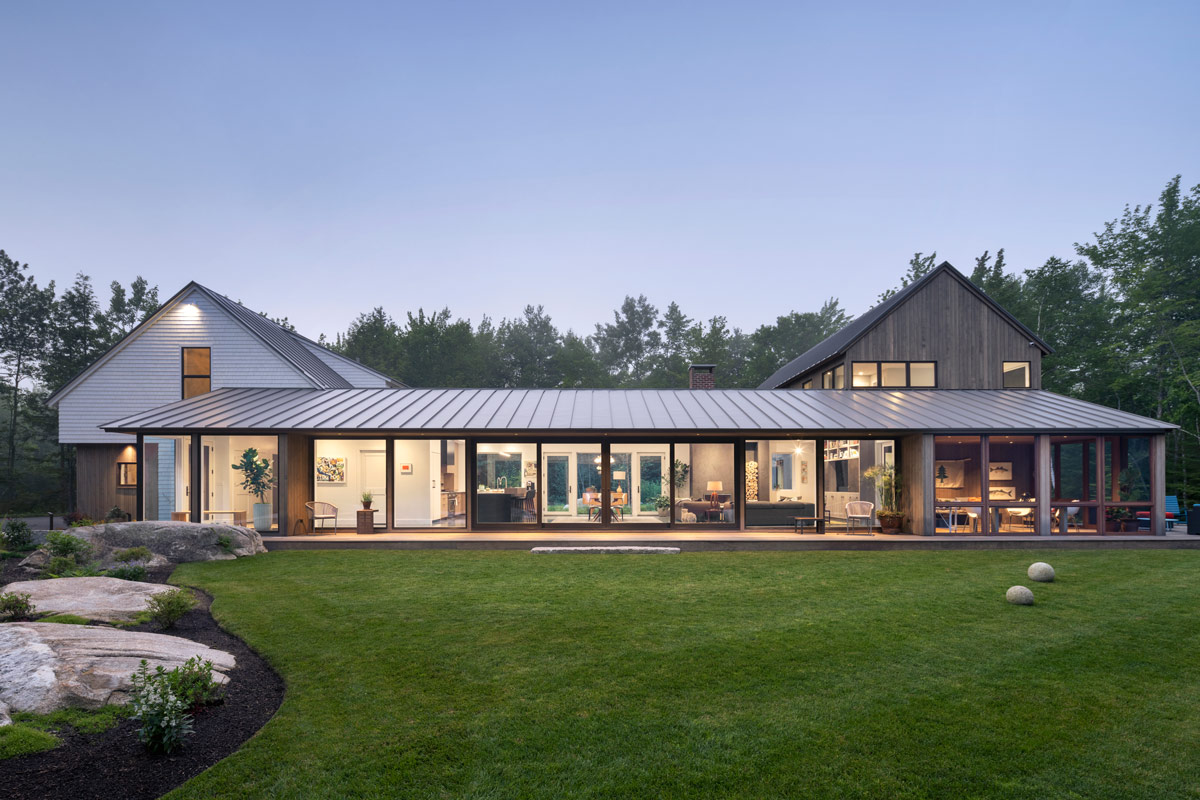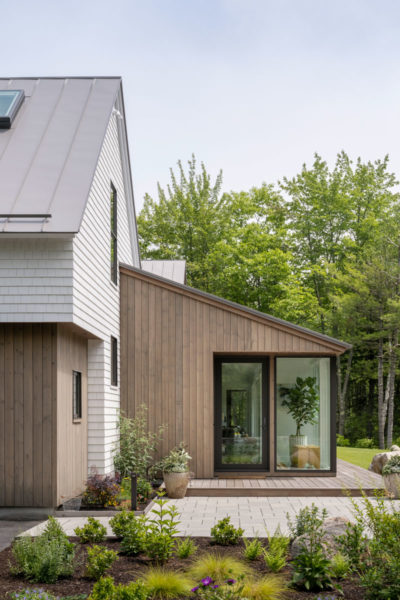Story at a glance:
- Whitten Architects designed the Binnacle Hill Residence in Kennebunkport, Maine through a site-specific approach.
- The residence embraces nature and daylight in its open-concept, family-centric design.
- A U-shaped floor plan connects the garage and bedroom wings through the primary living spaces.
Nestled in the coastal community of Kennebunkport, Maine sits Binnacle Hill, a wooded residential neighborhood steps away from Goose Rocks Beach. Developed by Geoff Bowley of Kennebunkport-based Bowley Builders, the neighborhood features large ledge outcroppings, winding drives, and plenty of natural greenery. In 2019 Bowley transitioned from developer to client for a new project: his home.
Bowley collaborated with Whitten Architects, an award-winning residential design firm based in New England, for the Binnacle Hill Residence. Together they constructed a modern and sustainable home with an open-concept, family-centric design.
“To accommodate their growing young family, the Bowleys needed a spacious but contained playroom, an ample pantry and storage, a large garage, playful children’s rooms, private primary suite, and a supervised play yard,” says Jessie Carroll, associate principal and project architect at Whitten Architects.
The residence’s U-shaped floor plan features garage and bedroom wings that connect through the primary living spaces. Large floor-to-ceiling windows blend the interior with the wooded landscape, creating elegant space for each member of the family.
Low-Maintenance Materials
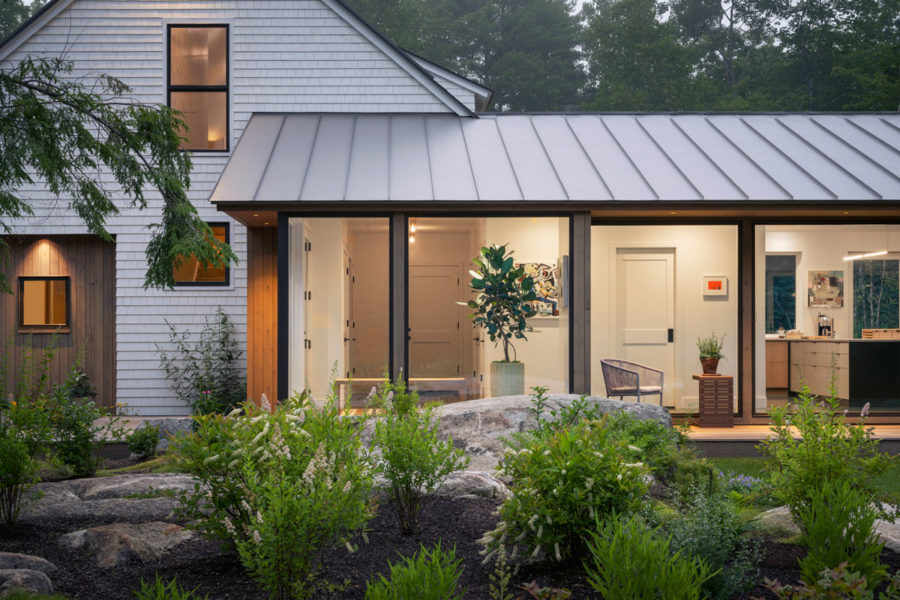
Photo by Trent Bell Photography
The project utilized low-maintenance, sustainable building materials, including white cedar shingles and thermally treated pine siding with mahogany elements. The earth-tone mahogany trimming complements the surrounding environment and creates a distinguished yet balanced contrast with the white shingles.
Like a bridge connecting the two ends of the home, the sloping metal roof provides a durable alternative to asphalt shingles. Metal roofs can last 40 to 60 years, whereas roofs made of asphalt typically last around 20 years, according to a study by the National Association of Home Builders.
Open-Concept Family Spaces
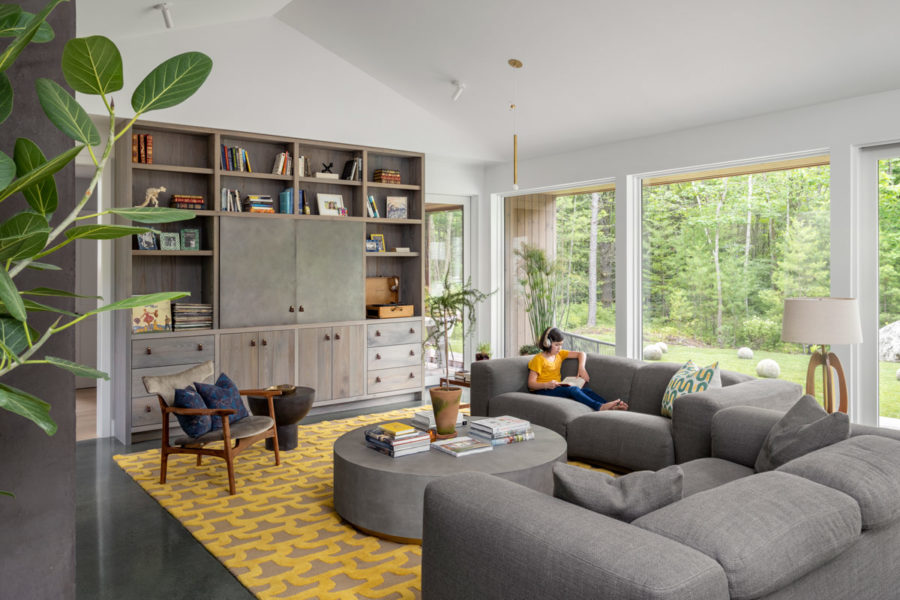
Photo by Trent Bell Photography
The open-concept layout of the kitchen, living, and dining rooms creates ample space for family gatherings. The white vaulted ceilings, kept in scale with a low slope, reflect plenty of natural light throughout the space.
The parents’ and children’s bedrooms are separated to increase privacy. While the primary suite is on the first floor, the children-focused spaces, such as private bedrooms, a playroom, and a shared bathroom, are on the second floor. The laundry room sits at the base of the stairwell on the first floor, equidistant between the kid’s floor and primary suite.
Site-Specific Design
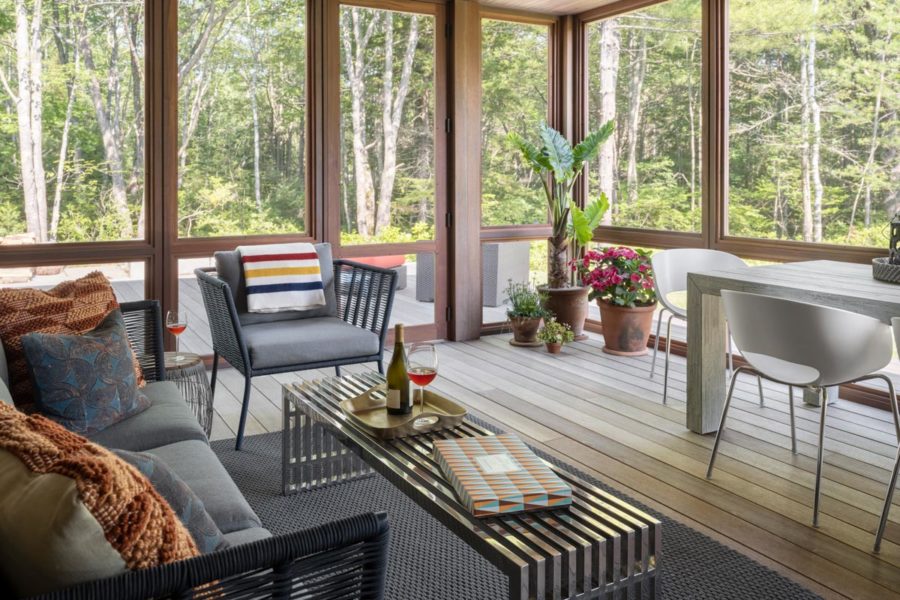
Photo by Trent Bell Photography
Whitten Architects’ fundamental principle for sustainable building—site-specific design—strategically places homes to maximize solar exposure, provide protection from prevailing winds, and take advantage of the site’s natural features. This approach, quite literally, built the foundation for the Binnacle Hill Residence.
“Our site-specific design angled the house just east of south for ideal solar exposure, while the primary living space was situated toward a sunny lawn space against a wooded edge,” Carroll says.
The architects also designed an exterior soffit to protect the south-facing door systems from the weather. The large soffit promotes shade in the summer months and passive solar gain in the winter months.
The living room extends into a screened porch and open terrace, blending the living space into the outside world. With encouragement from Interior Designer Krista Stokes, the concrete floors were tinted with a slight shade of green to reflect the landscape.
“Together with the client and landscape architect, we paid special attention to how the building and interior programming met the landscape,” Carroll says.
Daylighting and Passive Solar
- Photo courtesy of Trent Bell Photography.
- Photo by Trent Bell Photography
Daylighting and passive solar are essential for the project’s site-specific approach, Carroll says. Using Marvin Window and Doors’ floor-to-ceiling glass windows, the Whitten Architects team aimed to maximize daylight for the spaces that need it most.
“The kitchen/living/dining wing, where our homeowner spends most of their day, has ample south-facing window and door systems,” Carroll says. “The bedroom wing, including the primary suite, is orientated to the east for morning light.” The architects also cleared a play yard for adequate solar exposure, which is situated toward the primary living space for supervised yet private child play.
Maximizing solar exposure enhances the project’s sustainability. Constructing the residence according to the sun’s path provides natural cooling in the summer and ample sunlight in the winter. Carroll says that attention to these passive strategies is essential for a truly sustainable approach.
In addition to the passive strategies, Carroll believes a sustainable home is a loving home. “A home that is rigorously considered such that it functions well within its environment will be cherished and utilized to its greatest extent for many years to come.”
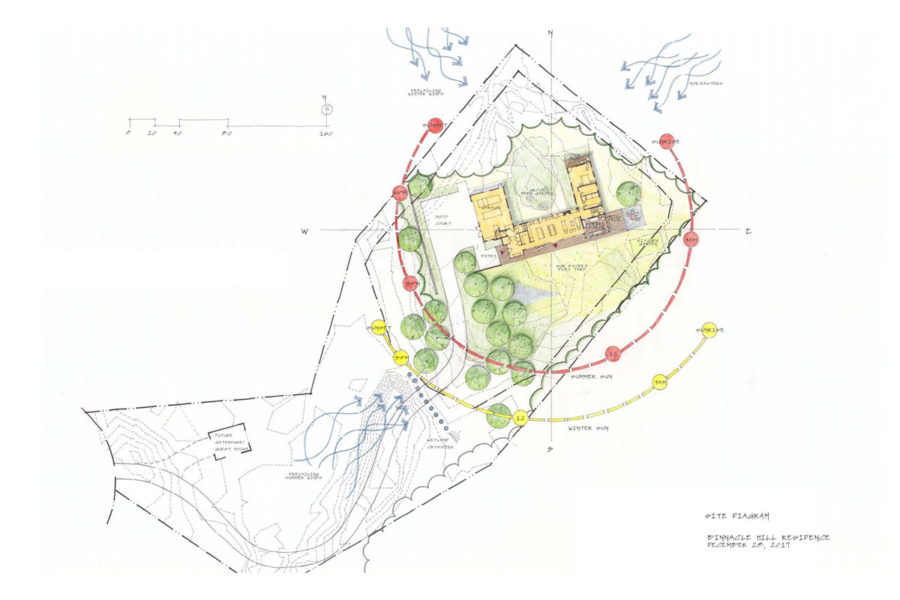
Courtesy of Whitten Architects

